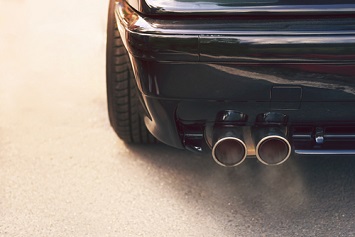In December 2020, the EPA issued an Enforcement Alert regarding aftermarket defeat devices that “bypass or render inoperative required emissions control systems, resulting in significant increases in harmful air emissions” from motor vehicles and nonroad equipment.
The EPA resolved more than 70 cases in the past 5 years involving prohibitions against tampering under Section 203(a)(3) of the Clean Air Act (CAA) and 40 CFR 1068.101(b).
The Agency “remains concerned that regulated entities are continuing to ignore” these prohibitions.
Specifically, the rules state that “emissions-related parts and elements of design must not be changed, including any part, device or element of design installed on or in a motor vehicle, non-road equipment, motor vehicle engine, or non-road engine by an Original Equipment Manufacturer (OEM) for the specific purpose of controlling emissions.”
The Agency’s rules cover a comprehensive list of elements of design, devices, and parts, including:
- The onboard diagnostic system (OBD);
- Diagnostic trouble codes (DTCs);
- Sensors for oxygen, oxides of nitrogen (NOx), ammonia, particulate matter (PM), urea quality, and exhaust gas temperature;
- Diesel particulate filters (DPFs) and their sensors;
- Exhaust gas recirculation (EGR) systems;
- Diesel oxidation catalysts (DOCs);
- Selective catalytic reduction (SCR) systems;
- NOx adsorber catalyst (NAC) systems;
- Engine calibrations that affect engine combustion (e.g., fuel injection or ignition timing, injection pattern, fuel injection mass for each injection event, fuel injection pressure, EGR flowrate, mass air flowrate, and EGR cooler bypassing); and
- Any other part, device, or element of design installed on certified vehicles or engines in compliance with Title II of the CAA and its regulations, including parts and specifications included in the manufacturer’s tested prototype.
Section 203(a)(3) of the CAA is specific. Part B of this section clearly states it is a violation:
“ … for any person to manufacture or sell, or offer to sell, or install, any part or component (i.e., ‘defeat device’) intended for use with, or as part of, any motor vehicle or motor vehicle engine, where a principal effect of the part or component is to bypass, defeat, or render inoperative any device or element of design installed on or in a motor vehicle or motor vehicle engine in compliance with regulations under Title II of the Clean Air Act, and where the person knows or should know that such part or component is being offered for sale or installed for such use or put to such use.”
Part A of the 203(a)(3) statute further cements the violation, stating the prohibition against any person who knowingly removes or renders “inoperative (i.e., ‘tampering’) any such emissions control device or element of design.”
‘Reasonable Basis’ Is a Defense
The EPA obviously focuses its enforcement efforts on devices that increase emissions. So, any person “who has a reasonable basis for knowing that use of such part will not adversely affect emissions performance” and who is involved in the manufacture, sale, or installation of aftermarket parts can claim the “reasonable basis” defense, provided he or she can show the device or modification will have no adverse impact on emissions in each of the following circumstances:
- The aftermarket part is identical in design and function to the part or component it replaced.
- The vehicle or engine, as modified, meets emissions standards when tested on the same tests the OEM used to certify the vehicle with the EPA.
- The California Air Resources Board (CARB) has issued an Executive Order (EO) that covers the same device or part on the same model vehicle on which the device or part was installed.
Costly Violations for Emissions Tampering
The price tag for violations is steep—the maximum civil penalty is “$4,819 per defeat device manufactured, sold, or installed, or per vehicle tampered. A dealer or vehicle manufacturer who tampers with a vehicle may be subject to significantly higher civil penalties.”
For an example of the amount of penalties that can be applied in these types of cases, see the EPA information sheet on its settlement with Performance Diesel, Inc.
Companies whose operations involve these types of emissions-related devices are also advised to keep in mind that many states have additional regulations regarding these devices.
A previous defense was that the aftermarket defeat devices were produced for “competition only” use. The Agency had a practice of not enforcing these regulations against vehicles used solely for competition events. However, the EPA’s statistics show “that hundreds of thousands of diesel pickup trucks have had their emissions controls completely removed, and most or all the aftermarket defeat devices used to tamper these trucks were sold under the claim of ‘competition only.’ The sheer volume of aftermarket defeat devices belies the assertion that they are only for competition motorsports.”
The EPA has actively and strictly enforced actions against companies claiming “competition only” use. In the EPA’s action against Punch It Performance and Tuning, the company was required to stop manufacture and sale, turn over its intellectual property, and pay civil penalties to the tune of $850,000. That company further compounded its problems by transferring “real estate and monetary assets to one or more of the individual defendants in their personal capacities,” resulting in the EPA seeking further enforcement under the Federal Debt Collection Procedures Act.

